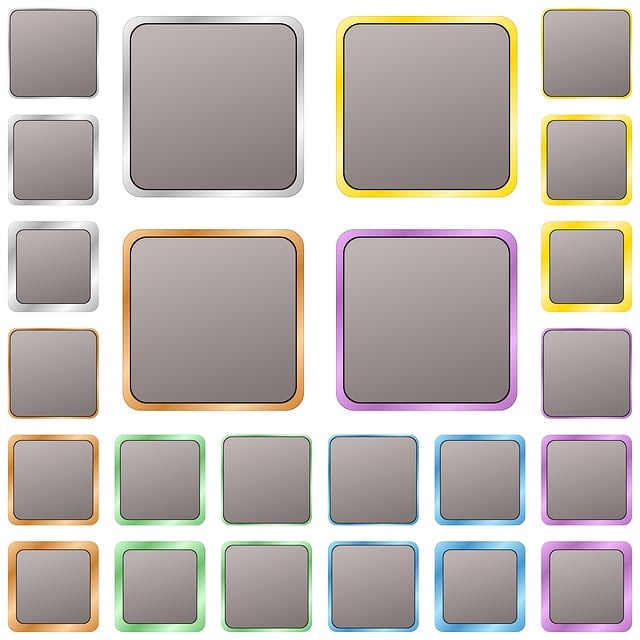UI design thrives on creativity, challenging norms for captivating user experiences. Abstract concepts, non-linear navigation, and gamification elements engage users, enhancing interactions. Minimalism simplifies interfaces, reducing cognitive load. Interactive elements animate interfaces, fostering user control and satisfaction. Personalization leverages data for tailored experiences. Accessibility ensures inclusivity, benefiting all users. Visual hierarchies guide users intuitively. Microinteractions add delightful feedback, improving usability. User research drives design effectiveness, understanding behaviors and needs.
“Unleash creativity in UI/UX design and elevate user experiences! This comprehensive guide explores innovative solutions to craft intuitive, engaging interfaces. From embracing unconventional ideas to implementing accessibility features, we delve into proven strategies. Discover how storytelling, minimalism, interactive elements, personalization, and user research enhance usability. Optimize your UI design with visual hierarchies, microinteractions, and diverse audience considerations. Elevate your digital creations and captivate users with these transformative approaches.”
Embracing Unconventional Ideas in UI Design

In the realm of UI design, creativity often flourishes when designers embrace unconventional ideas and push beyond established norms. The digital landscape is saturated with familiar interfaces, so innovating with unique concepts can instantly captivate users. Instead of following a formula, designers should dare to explore abstract shapes, non-linear navigation paths, or even incorporate gamification elements that add fun to the user experience. These daring approaches not only differentiate a product but also foster engagement and make interactions memorable.
By stepping outside the box, UI designers can transform mundane tasks into delightful journeys. For instance, using animations as visual cues for functionality or employing unconventional color schemes to evoke specific emotions. Such fresh perspectives on UI design not only challenge users’ expectations but also reflect modern aesthetics, ensuring a visually appealing and immersive experience that stands out in a crowded digital world.
Crafting Intuitive User Experiences Through Storytelling

In the realm of UI/UX design, storytelling isn’t just about crafting engaging narratives; it’s a strategic tool for building intuitive user experiences. By weaving together visual elements, interactions, and content in a way that resonates with users, designers can guide them through digital journeys that feel natural and seamless. This involves understanding user personas, their goals, and the emotions that drive their decisions—all while using design as a means to communicate complex ideas simply.
Storytelling in UI design enhances navigation by creating a linear or non-linear path that mirrors the way users think and behave. It adds depth to interfaces, making them more memorable and relatable. Through carefully crafted micro-interactions, animations, and visual cues, designers can tell stories that keep users invested, ensuring they not only complete tasks but also have a positive, personalized experience. This approach not only improves user satisfaction but also fosters brand loyalty, ultimately transforming the way users interact with digital products.
The Power of Minimalism: Simplifying Complex Interfaces

In the realm of UI/UX design, minimalism isn’t just a trend—it’s a powerful tool for simplifying complex interfaces. By stripping back unnecessary elements and focusing on essential functionalities, designers create intuitive user experiences that enhance, rather than hinder, user interaction. This approach allows users to navigate digital spaces more efficiently, making even the most intricate applications feel surprisingly simple and accessible.
In a world where folks are constantly bombarded with visual noise, minimal UI design stands out as a breath of fresh air. It clarifies information architecture, reduces cognitive load, and fosters a sense of calm among users. This strategy isn’t about deprivation; it’s about prioritizing what truly matters. By doing so, designers can ensure that every element on the screen serves a purpose, ultimately delivering an experience that feels both elegant and effective.
Interactive Elements: Adding Life to Static Screens

In the realm of UI/UX design, interactive elements are like whispers of life, breathing vitality into what was once static. They transform bland screens into captivating experiences, pulling users in and encouraging exploration. Beyond simple buttons and links, innovative designers employ dynamic animations, intuitive gestures, and responsive feedback to create a symphony of interaction that resonates with users on a deeper level.
These interactive elements aren’t just visually appealing; they also serve crucial roles in guiding users through a UI. Well-crafted interactions can simplify complex tasks, provide immediate feedback, and foster a sense of control, ultimately enhancing user satisfaction and engagement. As we navigate the ever-evolving landscape of digital design, embracing these creative UI solutions is essential to keep up with folks’ ever-increasing expectations for seamless, enjoyable experiences.
Personalization: Tailoring Digital Experiences for Users

In the realm of UI/UX design, personalization is a powerful tool that transforms digital experiences from generic to tailored interactions. By leveraging user data and behavior patterns, designers can create interfaces that adapt to individual preferences and needs. This approach goes beyond mere aesthetics; it involves dynamic elements like personalized recommendations, customized layouts, and dynamic content delivery. A well-personalized UI design not only enhances user satisfaction but also encourages engagement by offering a unique, relevant experience.
For instance, an e-commerce platform can utilize machine learning algorithms to suggest products based on a user’s browsing history and past purchases. Similarly, streaming services adapt their home screens with content tailored to each subscriber’s viewing habits. This level of customization fosters a sense of ownership among users, making them feel understood and valued, which is essential for building loyal user communities in today’s competitive digital landscape.
Accessibility: Designing for a Diverse Audience

In modern UI design, accessibility is no longer an optional consideration but a fundamental requirement. It involves creating digital interfaces that cater to users with various physical, sensory, and cognitive abilities. By implementing inclusive design principles, designers can ensure that their creations are usable by everyone, promoting digital equity and enhancing user experiences across the board. This includes features like alt text for images, keyboard navigation support, high contrast options, and clear content structures to assist users with visual or motor impairments.
A thoughtful approach to accessibility means embracing diversity in UI design. Designers should strive to create interfaces that can adapt to individual needs, accommodating different user preferences and abilities. This not only expands the reach of digital products but also fosters a more inclusive online environment, where no one is left behind due to physical limitations. After all, designing with accessibility in mind benefits not just people with disabilities but also improves overall usability for everyone.
Visual Hierarchies: Guiding Users Through Information

Visual hierarchies play a pivotal role in effective UI design, serving as a roadmap for users navigating digital spaces. By organizing information through careful placement, size, color, and contrast, designers can guide users’ attention to key elements, making interactions intuitive and less overwhelming. Top-level content or primary actions should stand out, while supporting details recede slightly, creating a clear visual hierarchy that mirrors the user’s mental model of how to interact with the interface.
This strategic approach ensures users can quickly grasp the structure of the page, find relevant information, and achieve their goals efficiently. In UI design, visual hierarchies are not just about aesthetics; they are functional elements that enhance usability, making applications or websites more accessible and user-friendly for diverse audiences.
Microinteractions: Small Gestures with Big Impact

Microinteractions in UI design are those subtle, yet powerful, gestures that enhance user experience. They’re like tiny dances between a user and an interface, adding a layer of delightfulness to what could be a mundane task. A simple tap, swipe, or hover can trigger these microinteractions, creating immediate visual feedback that keeps users engaged.
These small details make interfaces more intuitive and interactive, fostering a sense of satisfaction as users navigate through various screens. By incorporating well-designed microinteractions, UI designers can significantly impact the overall usability and aesthetics of an application. It’s about turning functional elements into experiences that captivate and guide users seamlessly.
User Research: Understanding Behaviors to Create Effective Designs

User research is a cornerstone in the UI/UX design process, enabling designers to create effective solutions by understanding user behaviors and needs. Through various methods like surveys, interviews, and usability testing, designers gather insights into how users interact with products and what motivates their decisions. By mapping user journeys and creating user personas, designers can identify pain points and opportunities for improvement in UI design.
This deep understanding allows for the development of intuitive interfaces that cater to user expectations. For instance, recognizing patterns in navigation preferences helps in designing clear and consistent menus, enhancing usability. Moreover, user research ensures that the final product aligns with its intended audience’s requirements, leading to higher user satisfaction and engagement, core metrics for successful UI design.
